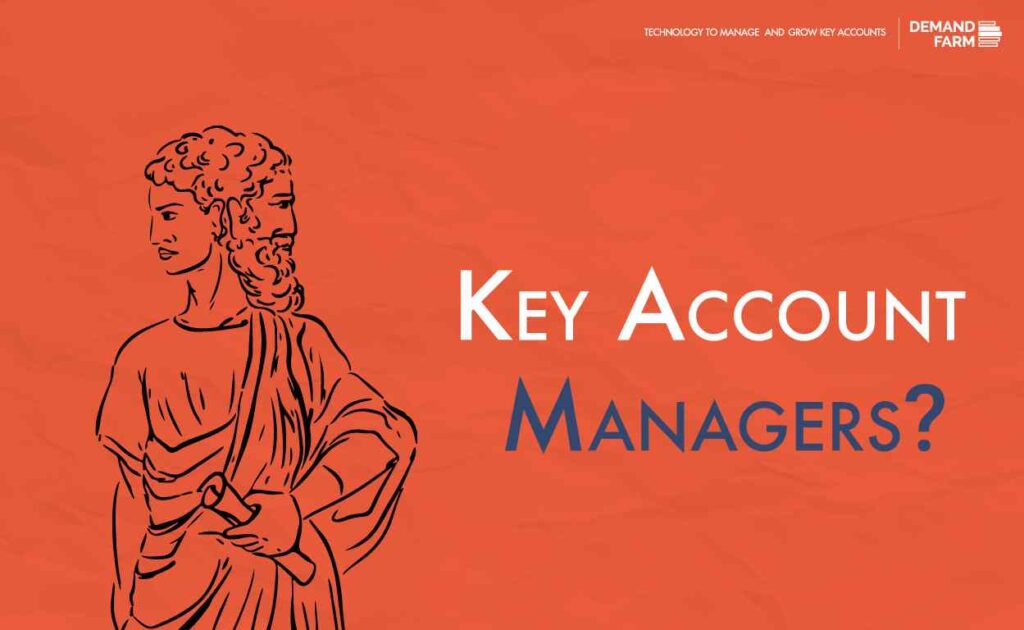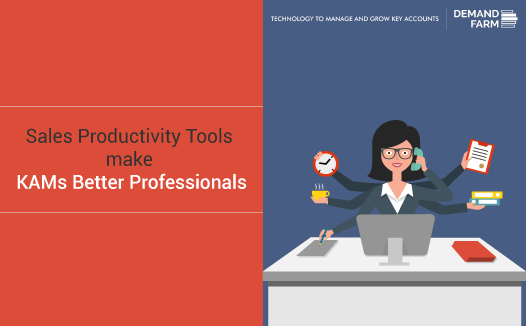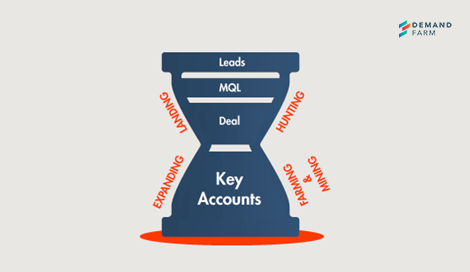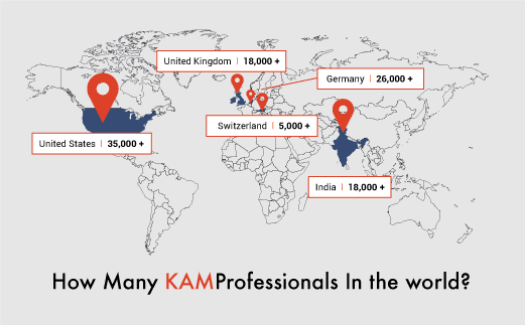Is An Account Manager – Robot? Iron Man? Or Superman?

The approach to problem-solving was superbly explained to me by Dhiraj Rajaram of Mu Sigma. I loved the simplicity of the framework & its analogy. The implication in the business process and problem-solving is profound. I kept revisiting this framework for the Key Account Management process. So what persona do you want your Account Managers to have? Robot: Key Account Management is not that simple. One cannot ‘automate’ the whole process and have Robots run the process. There is a uniqueness to every b2b company in terms of what value they add to their strategic accounts. Their uniqueness to each account of the same b2b company. So unless you sell something that is completely commoditized, you cannot make your Account Managers into Robots. Superman: You would want all your Account Managers to be Supermen of course. That’s not going to happen. Few could be, that too for some time and not all the time. Training all your Account Managers to be Supermen is not scalable or sustainable. Iron Man: I like him. He is a human and if provided with the right tech and account planning tools can do amazing things. A reasonably intelligent and passionate account team provided with tech & tools (read DemandFarm). They return amazing results. This is scalable & sustainable. At DemandFarm we automate the repetitive & simpler tasks of an Account Manager (Robot). We also provide frameworks that can be configured to suit your company’s Strategic Account Management process (Iron Man). We leave the ‘human’ in your Account Manager to do what only humans can do (Superman). That’s why 5000+ Account Managers love using DemandFarm’s key account management software to manage and grow their accounts. Let us show you how we do it.
Janus-Faced Key Account Managers?

Key account managers share a love-hate relationship with key account management methodologies. Ironic, isn’t it?Often, I have heard KAM purists say that the best Key Account Management is to understand customer’s strategic goals and find ways of helping them achieve that. The Key account managers aren’t amused and retort, ‘You know what is the strategic goal of my customer? They want to rationalize the number of vendors to half this year. The remaining vendors have to find ways of saving at least 25% of the price. Another classical KAM theory advice is, ‘You must “co-create” value with customers. An Account Manager from a plastic molding company heard this at a conference. *Later during coffee break* “Oh yeah ‘co-create’ b**l sh*t.” One of his customers wants to convert many engine parts from metal to plastic. But refused to spend jointly on developing the prototype and mold. The best he could get was supplying fixed volumes for the first year if prototyping is successful. He knows that in the second year, he has to compete for the price with other vendors. So much for ‘co-creation’. It is foolish to broad-brush key account management. KAM in different industries like enterprise SaaS, plastic molding, IT Services, and commodity steel will be different. I think we should begin by making KAM methodologies simpler. The theorists and coaches have gone too deep and far to differentiate one methodology from the other. Therefore many are utopian and not practical anymore. It partially explains why key account managers hate to follow them to the ‘T’. Utopian Key Account Management For example, other days I came across a relationship map template where every customer contact was to be tagged with 5 parameters. Political Role Personality Type Your Relationship Coverage. Each of these parameters has 5+ options to choose from. This is over and above hygiene attributes – name, title, department, location, reports to, reporters, budget controlled, opportunities….. Is it realistic to get this data for even 3 dozen contacts in an account? Even if you get it who will document this? Even if one does, who will update this data every quarter?Come on, be a sport. This is an example of only ‘Contact Relationship’. These coaches/ theorists have complicated and made unrealistic all other elements of KAM like Account Planning templates and Account Segmentation. On the other extreme, KAM practitioners (Account Managers) have left it to ‘Heroes’ or serendipity. Basically relying on that individual with good relationships and domain knowledge to manage the account. Or leave it to chance – being there at the right time, with the right people, and with a solution that fits NOW. Ideally, strategic account management stakeholders should strive to strike a balance. Account manager comfort has to be balanced with account priorities with account planning being right there at the top.Perhaps, the time has come for us to go back to KISS for KAM. Keep It Simple, Stupid. Here is how to keep it simple. You just have to read my strategic account management process blog.
3 Sales Productivity Apps Key Account Managers need

Sales Productivity apps are an important add-on tool for Key Account Managers in addition to their Key Account Management software. Times have changed and these apps are a luxury no more, they’re a necessity for efficient key account management. A key account manager needs these tools for efficient key account management. Why? Sales and account managers need to collaborate for possible farming and mining opportunities within Key Accounts, especially in the larger and more complex ones. Often, account managers have to work with sales to bring the new project in or close it themselves. Considering that, here are a few sales productivity tools that can help sales teams and Key Account Managers collaborate better and achieve their goals more effectively and efficiently. HubSpot Sales (Previously Sidekick by HubSpot) HubSpot CRM lets you manage sales pipeline, log sales acceleration activities and get insights from the activities of your sales team. How does it help Key Account Managers (KAMs)? Quickly add tasks for sales reps, such as follow-ups or up-sell conversations. Deliver sales insights to sales reps on the road with mobile alerts. Improves team communication with a full account history in a single view. Prevents deal from getting lost or delayed with activity tracking and the next steps. Inside Sales Box A Sales Acceleration Platform built for teams to manage and accelerate sales processes. A high performing sales team can deliver predictable revenue, consistently. What does it have for KAMs? Increases productivity of sales teams with timely reminders and sales cadence. Shares important information about contacts, such as emails, documents and files, and contact info with a click of a button. Connects with 3rd party applications through Zapier. Integrate your KAM technology and get started with Inside Sales Box. LinkedIn Sales Navigator Sales Navigator is a sales performance platform, helping organizations increase the productivity of sales teams. How do Key Account Managers leverage it? Focus on the right people – Find the right prospects quickly with LinkedIn Sales Navigator. This sales tool features a sophisticated algorithm to give you lead recommendations that are tailored to you. Easily save leads and create a sales lead list. Stay informed with insights – Get sales insights for more effective selling. LinkedIn Sales Navigator has the tools to help you stay informed and up-to-date about your prospects. Be in the know with timely and accurate information to turn cold calling into warm conversations. Build trusted relationships – Create a professional, trusted brand and engage with confidence by leveraging your own and your company’s network. Do you think I missed an application? Are there other applications that have helped boost your productivity?Yes, there can be. It totally depends on the use case.Visit MarTech Advisor and the Salesforce AppExchange for a range of sales productivity and key account enablement tools like DemandFarm.
Listen to this, Key Account Managers!

You may be hearing and seeing a lot of things Key Account Managers, but what most of you need to up your quotient on, is listening. We have heard a lot of talk on listening. But have we started practicing real listening? We have probably not, because, in sales, we are more interested in giving our sales talk, than hearing the customer out. We are focused on one thing – to make sure that whatever we have practiced as a sales pitch should not go unsaid, that we should not be missing out on the important parts. So what is listening? The real meaning of listening is to listen patiently to the customer so that you understand what he is saying or what he is trying to say but is not voicing it. Not all customers or people are explicit or matter-of-fact, when they are talking, you have to learn to ‘read between the lines’ when your customer is talking. This will help you understand him, his perspective, his need; this will help you assess the situation overall. This will help you tailor your pitch to suit the situation and the customer, and we promise; it will be more effective than a ready-made, standard pitch. The unfortunate truth is that, how much ever we talk about listening, it needs to be taught with examples. A daily has quoted that 2% of salespeople are taught ‘listening’ formally. Here are some eye-openers, err, ear openers on listening: We derive 55% of a message’s meaning from the speaker’s facial expressions 38% comes from how he says the message that is his tone of voice and just 7% from the actual words spoken! 50% is how much information we usually recall immediately after we listen to someone talk. We can listen at twice the rate than a person can talk. How to listen and handle a call well. Listen without interrupting – Initiate the conversation and then sit quietly, listening to the customer intently. Acknowledge what is said – Acknowledge what the customer has said. This does not always mean you are in agreement. This just shows that you are listening, which is enough to keep your customer talking. Ask questions – Ask questions to get clarity on what the customer is saying. This way you will learn more than the obvious. Recap and restate – If there is an objection raised, or if it is something the customer is saying, restate it to be on the same page with him and let him know that you are on the same page. Address and overcome – Don’t beat about the bush. Tackle the objection directly by using factual information. For this, you will need to have the product information and the knowledge at your fingertips. Close – Very, very important. Do not leave any loose ends. Close that particular meeting by stating clearly the next steps expected and from whom. Be polite but the state. Move the sale forward in its journey. Correct course, if need be and commit – A sale is never a one-time ‘Hit the bull’s eye’. It takes time. Often, in the journey, the customer will add different inputs that will change the course of your plan. Moreover, will mean that you will have to correct the course, Be patient. Don’t be in a rush to commit just so you can close it. Show your willingness to alter and present again, but with clear timelines specified. I hope these were some handy tips to learn and practice the art of listening and ensuring you engage correctly with your customer and add to the sales effectiveness during every customer interface. God gave us two ears and one mouth for a reason, as it is said. The sooner we practice using our two ears, fully, we get closer to our sales objective. You can also download our whitepaper on the Hype & Art of KAM. P.S- Have you ever wondered, How many Key Account Management professionals are there around the world?
B2B Sales is a Funnel. No, Its an Hourglass aka a Damru!

Aren’t we all familiar with the Sales Funnel? It has defined the shape (literally) of marketing and sales, over the years. But I argue that for B2B companies, it is not a sales funnel, but an HourGlass or a damru. (Wikipedia says Damru is a small two-headed drum, used in Hinduism and an instrument used by Lord Shiva) Traditional B2B Sales Funnel What happens in a conventional sales funnel? Marketing generates thousands of leads and passes on the qualified leads to the sales team, who in turn win the deals. So far so good. But some B2B companies offer many solutions and long-term engagements with their customers. For these companies winning the first deal is just the beginning. It is consciously followed by identification of Key Accounts that are then, Farmed and Mined for more revenues i.e. LAND and EXPAND. Enter the Hourglass I was looking for a visual aid that could give me a good representation of this reality. The Traditional B2B sales funnel never gave me a good representation of this process. Thus, I extended the funnel by adding an inverted funnel at its bottom, shaping it as an ‘Hourglass.’ Images are a powerful means to drive home a point- in this case, Key Account Management as a critical component of revenue generation for B2B companies. Please refer to the diagram below. For most B2B companies, the bottom half of the ‘Hourglass’ generates 80%+ of the revenue in a given year. The most commonly used nomenclature is ‘Hunting’ & ‘Farming’. Hunting is to acquire new customers while Farming is to grow the business from existing customers. I have noticed that in recent years, companies have recognized that Hunting & Farming teams need to operate separately. Because inherently, hunting and farming skills are quite different. A good hunter is a flamboyant sales guy who connects with many people and ensures entry into an account. Whereas, a Farmer is a more intellectual and consultative type. He has a great knowledge of both customer business processes and how the solution fits into the concerned business’s reality. So a good hunter is invariably not so good at farming. The reverse is also true – a good farmer is uncomfortable in hunting. In a nutshell, a Hunter sells, while a Farmer helps a customer buy. Filling the Hourglass The hourglass concept can be further extended to include not just all the marketing and sales functions, but also tools and technologies that are impacting these functions. The ‘Hourglass’ also helps in organizing various functions in a B2B company. As you can see in the above diagram it is easy to define various roles of Marketing, Inside Sales, Sales and, Account Management in the revenue lifecycle. If I extend this further to sales and marketing technologies, we get the above. So, above the narrow neck, we have technologies and tools in Marketing automation, Inside Sales, Lead qualification and, Sales Process Automation. Key Account Management Software settles down below the neck. What is your view of ‘Hourglass’ as the right way of looking at the revenue pipeline for B2B companies? I look forward to your views.
How Many Key Account Managers in the World?

If you are into Key Account Management (KAM), this question would have probably crossed your mind? Originating from finding a solution to retaining Key customers to long-term relationship building to a full-fledged Key Account Management practice, KAM has become a vital ritual for organizations. With KAM, Organizations have recognized the need to ring-fence 80% of their revenue and more. We turned to LinkedIn to drum up the global population of key account managers. It stands at 306,000.Isn’t that quite a number? And if we further categorize the data by, Country Gender Age group We find some interesting data points. With data in, can an infographic be far behind? In this article, we have put all the above data onto one very easily consumable infographic. Please check it out here. Did you find anything interesting in the above infographic? The numbers from Germany and Switzerland definitely deserve a second look. It seems probable that there are job titles that contain ‘Key Accounts’ but are distinct from our conventional definition of Key Account Management. Possibly. What about the age group? Are younger professionals taking a greater interest in an account management career or is it just a function of the talent management approach for KAM organizations? I am interested in knowing your views. The data onto the above infographic were sourced from the LinkedIn Ad management tool. Within the tool, the DemandFarm team used the ‘Job Title’ parameter to determine the numbers. If you like what you see, do not hesitate to share it with the world. Explore the complete guide to Cross-selling and Up-selling to identify unexplored opportunities for your business as well as your clients’ business and grow better in 2021.